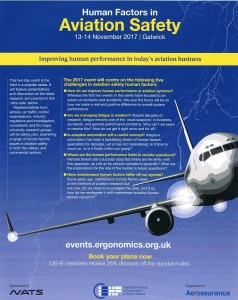High Potential Runway Incursion at Shanghai 11 Oct 2016
China Eastern Airlines Airbus A320-214 B-2337 (flight MU5643) had commenced takeoff from runway 36L Shanghai-Hongqiao Airport, China, just after noon local time.
China Eastern Airbus A330-343 B-6506 (flight MU5106), which had landed on runway 36R, exited 36R via B3, crossed taxiway Bravo and entered the active departure runway via H3, 2400 m from the point where the A320 commenced takeoff. Preliminary reports suggest the A330 may have been cleared initially to cross runway 36L but had then been instructed to stop and hold short.
The A320 is believed to have been travelling at 110 knots when the incursion was spotted. The A320 crew advanced the throttles and rotated about 300 meters before the crossing A330.
The Civil Aviation Administration of China (CAAC) report that the separation was just 19 m vertical and 13 m horizontal and have released a reconstruction:
UPDATE 22 October 2016: The local press report that just days into the investigation a wide range of disciplinary action has been taken:
“The air traffic controllers on the control tower were to blame for the ‘serious accident symptoms,’ who forgot the planes’ movements and gave wrong orders to the pilots,” the administration said.
The licenses of the controllers, who were manning the commanding and monitoring seats, were revoked — in one of the cases for life. The controller in the commanding seat was banned from ever undertaking any air traffic control jobs, the administration said.
Thirteen officials with the East China Air Traffic Management Bureau as well as the bureau’s air traffic control center and safety management department were either given Party warnings, serious warnings, had demerits recorded or faced losing their positions, the administration added.
It is not clear if any systemic lessons will be learnt and improvements made however.
UPDATE 27 October 2016: Unconfirmed reports claim that the A330 received a runway crossing clearance at 37 seconds after the A320 was cleared for takeoff when the A320 was just beginning its takeoff. This occurrence has been classified as a serious incident.
UPDATE 6 July 2017: at The 2017 Safety Forum, co-hosted by Flight Safety Foundation (FSF), EUROCONTROL and European Regions Airline Association (ERA) in Brussels 6-7 June 2017 on the topic of Preventing Runway Collisions Capt Pang Ying Qun presented on this incident. He commented that video evidence suggested the controller was fatigued. Also, he noted the tower layout restricted visibility (the controller can only see the south end of 36L if he leans his body backwards):
UPDATE 6 March 2020: An uncorroborated source reports the leaked conclusions of the investigators were:
The controller at the west tower of Hongqiao’s Airport issued a takeoff clearance to the A320 aircraft in violation of the Basic Flight Regulations of the People’s Republic of China and the East China Air Traffic Control’s Operations Manual, in particular he did not carry out continuous effective visual observation. He subsequently issued at runway crossing clearance to the A330 without accurately grasping the dynamics of the A320.
This appears to be a blame-centric conclusion that supports the suspension of licences just days after the occurrence. It does not appear any recommendations were raised.
Other Runway Incursion Resources
A Runway Incursion is defined as “Any occurrence at an aerodrome involving the incorrect presence of an aircraft vehicle or person on the protected area of a surface designated for the landing and take off of aircraft” (Source: ICAO Doc 4444 – PANS-ATM).
- Skybrary Runway Incursions
- European Action Plan for the Prevention of Runway Incursions
- Airbus Flight Operations Briefing Note Preventing Runway Incursions
UPDATE 24 November 2016: The Australian Transport Safety Bureau (ATSB) report on a loss of separation due to runway incursion involving Airbus A320, VH-VGI, and Fokker F50, VH-FKV on 17 August 2016 in Adelaide, SA. The ATSB safety message from that incident was:
The risk of runway incursions and other separation events can be minimised through good communication. This incident highlights the importance of:
• controllers and flight crews using correct phraseology
• controllers and pilots challenging instructions which they have not heard or understood fully
• pilots looking carefully for aircraft or other hazards before entering an active runway.
Aerossurance is pleased to be supporting the annual Chartered Institute of Ergonomics & Human Factors’ (CIEHF) Human Factors in Aviation Safety Conference for the third year running. This year the conference takes place 13 to 14 November 2017 at the Hilton London Gatwick Airport, UK with the theme: How do we improve human performance in today’s aviation business?





Recent Comments